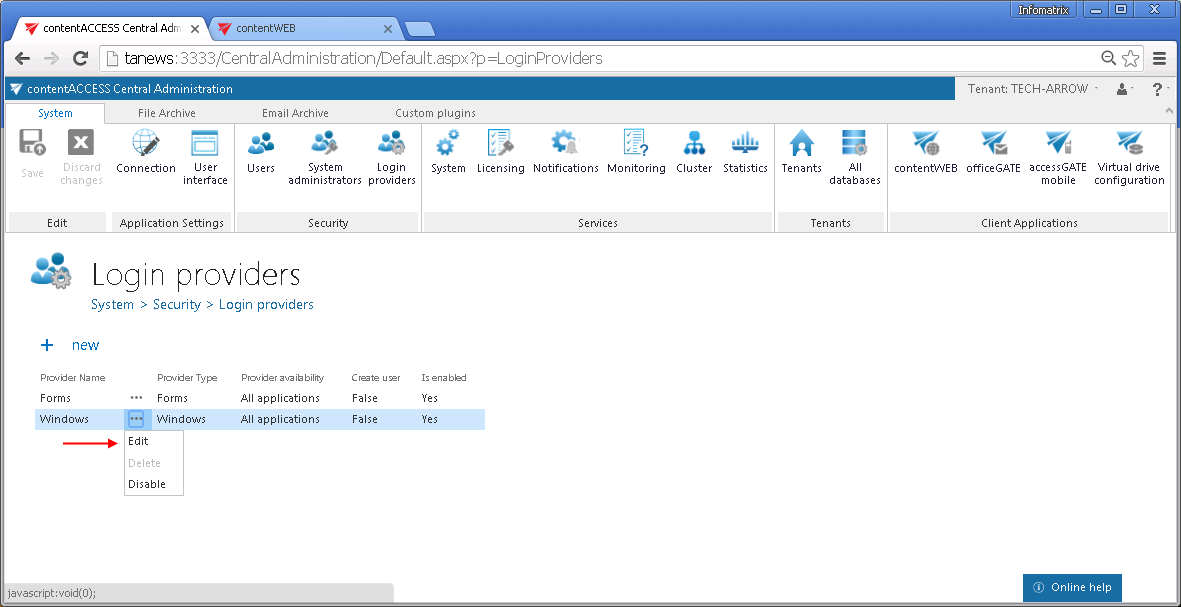6.7.Login providers
A contentACCESS user may log into contentACCESS (and/or its client applications such as contentWEB, officeGATE etc.) with an external user account (using third-party providers) or internal (“Forms” provider) user account.
The following external authentication providers are available in contentACCESS:
- Windows
- Azure
- Datengut (allows to log into client application officeGATE; Datengut plugin must be licensed)
- Perceptive (allows to log into client application officeGATE, Perceptive DMS must be licensed)
If you use a third party provider then this third party authentication provider will authenticate you when logging into the system. The Forms type requires to enter credentials when logging in.
When setting up a user account, a login type must be always selected. Users can only use login types which have been enabled in “Login providers”. “Windows” and “Forms” login providers are enabled by default. Other providers are available only after they are configured. The configuration steps required for third-party providers are detailed in the External login provider configuration chapter.
The list of enabled providers can be found on the Login providers page. To open it, navigate to the System tab => Security group on the ribbon and click on the Login providers button.
To edit or enable/disable/delete providers, open its context menu on the Logins provider page, and click on the desired item in the dropdown list. If a provider is disabled, it will not be possible to log in to contentACCESS with it. For security reasons, the user can’t delete “Windows” and “Forms” login configurations, and can’t disable “Forms” authentication.
If there is a 3rd party login provider configuration created (like Perceptive) and a user is already using it, then this provider can only be disabled, but can’t be deleted.

